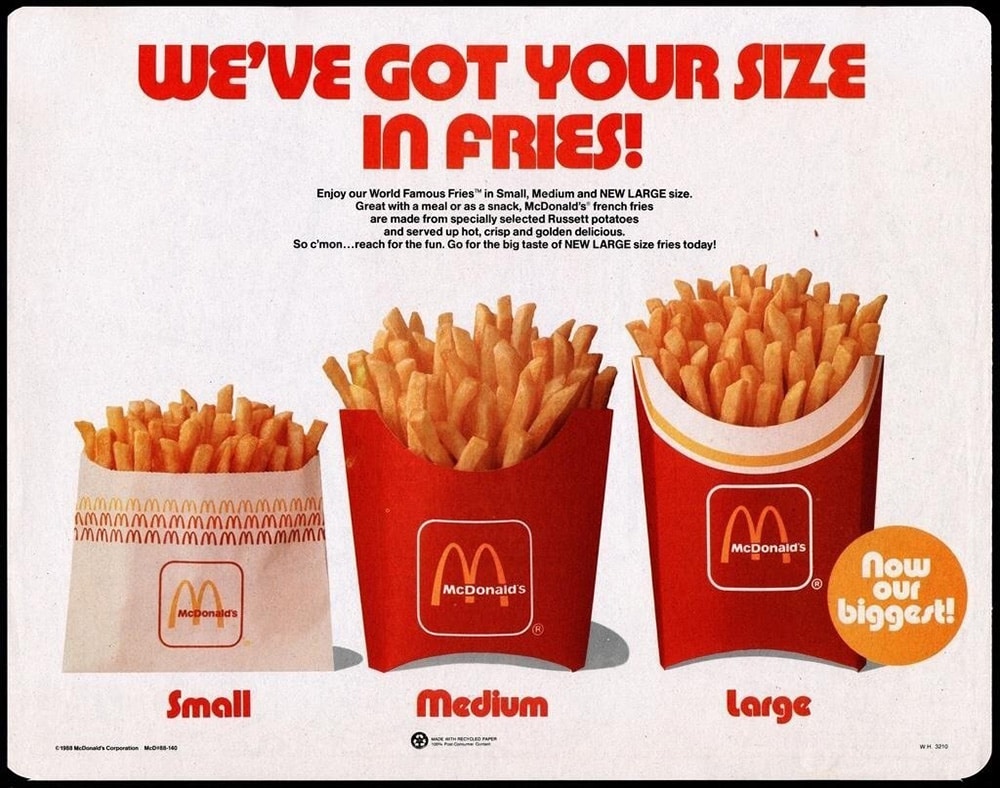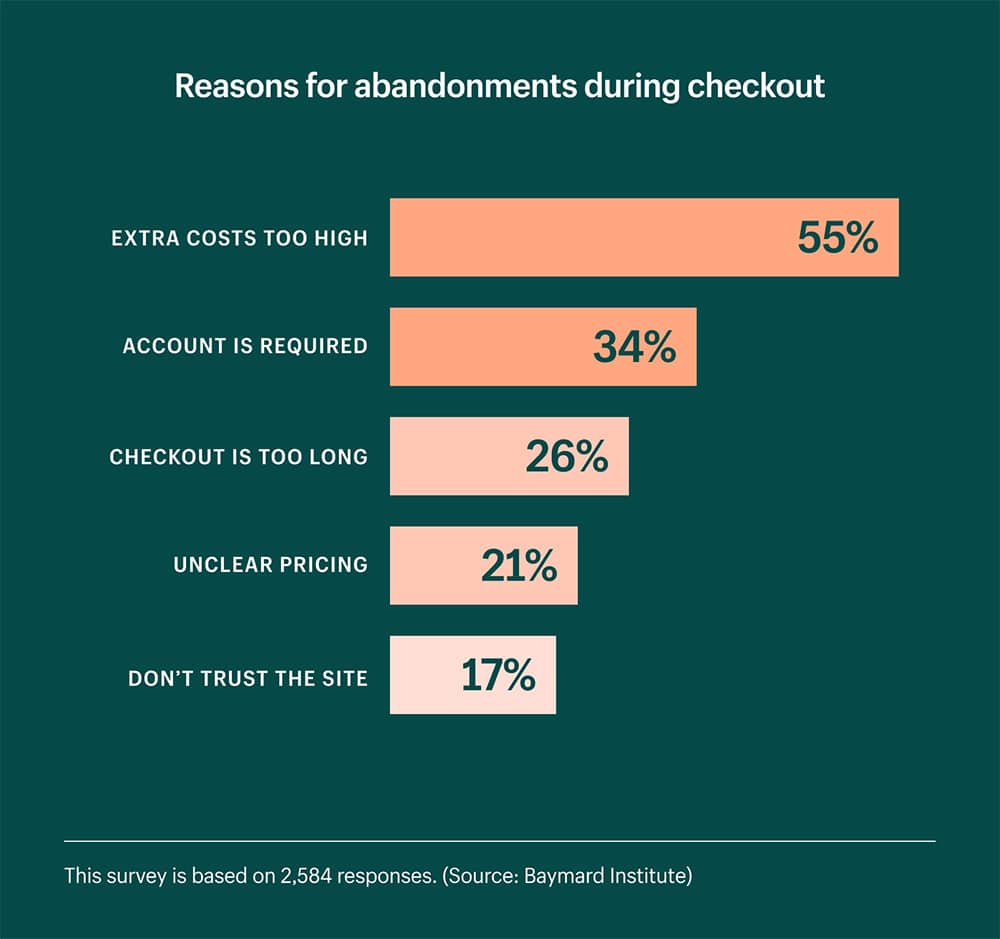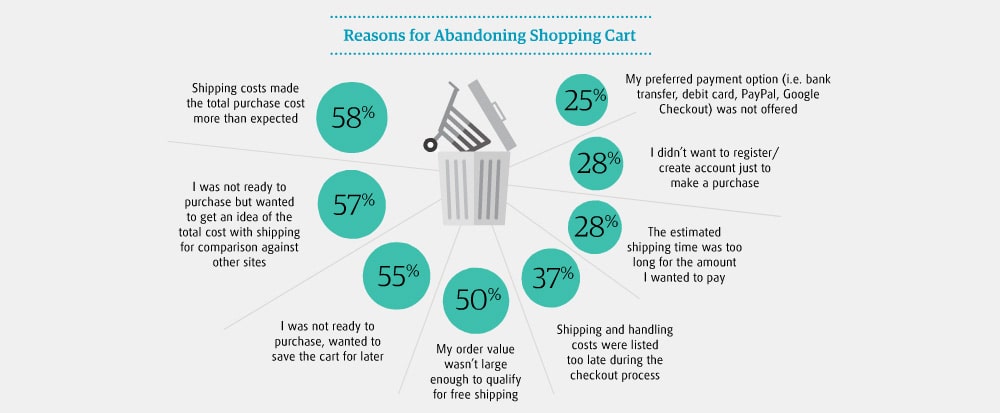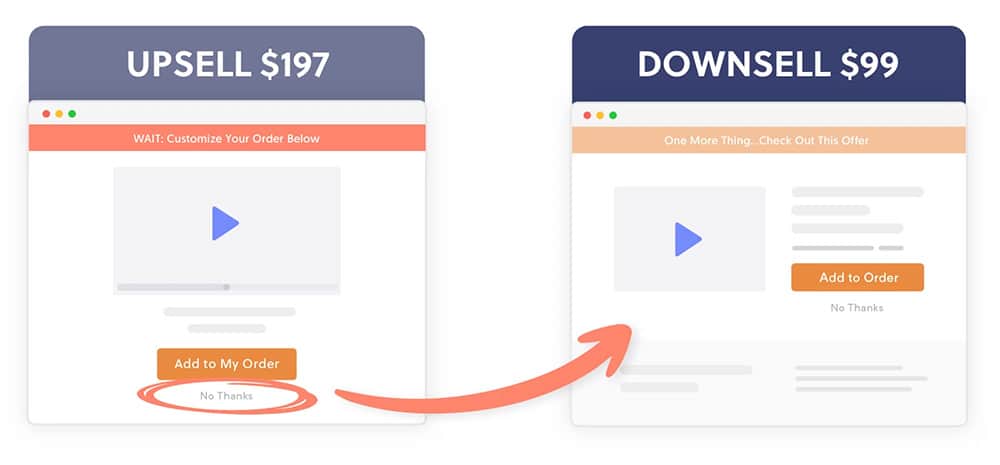If a potential purchaser spends time browsing your site, they must like what they see. They must like it even more if they hit “add to cart”. They’ve gone through the whole process of searching, reading reviews, and selecting products. But then their journey stalls at the final step, like running a race and not crossing the finish line.
Shopping cart abandonment occurs in over 68 percent of transactions. Of course, some customers will have every intention of completing their purchase later. They’ll come back when they have more time and all will be well.
However, in 2020, 88 percent of abandoned shopping carts were never converted. That represents trillions of dollars of incomplete sales left in limbo.
So, how can you break open that goldmine of dormant profit and close those transactions that are just one click from completion? The answer may lie in downselling.
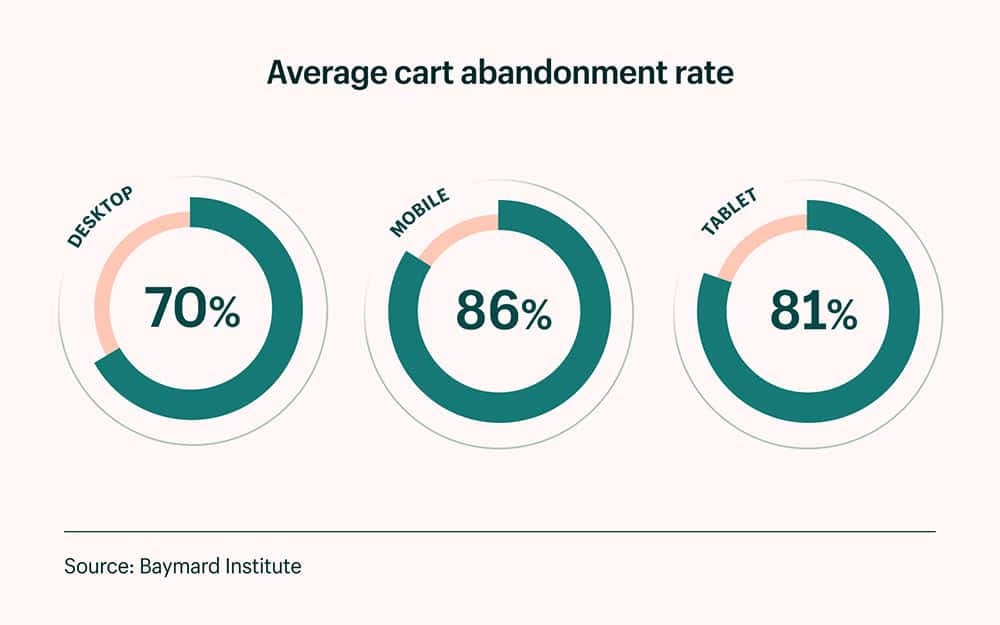
What Is Downselling?
eCommerce shopping is an abstract concept. It doesn’t seem real until you go to checkout and see the cost. Maybe the customer added several products without realizing the total. Perhaps the shipping costs were higher than expected. It’s impossible to know the precise reasons for abandonment, but the price usually plays some role in the decision.
Downselling is an innovative and versatile practice that can reawaken abandoned sales. The idea is to offer a discounted or alternative product to customers who are undecided. If you have a successful online store, you probably already have the software to implement it. If not, there are numerous no code low code solutions available.
There are four basic ways to downsell.
- You offer a discount. You offer your customer a discount as an incentive to complete their purchase.
- You offer a cheaper alternative. You offer a comparable product from a different manufacturer. This has similar functionality but is cheaper.
- You offer a basic version. You offer the same product by the same manufacturer but in a more basic form. That might mean a 64GB laptop instead of 128GB or a 2018 version of a phone instead of the latest model. You could even suggest a version of the product that has superficial damage or is unpackaged.
- You offer a free trial or freebie. You offer a first-ride-free deal to convert more casual prospects.
As you can see, the concept of downselling is simple, but the timing and execution add various layers of complexity.
Here are six ways downselling can be used to boost your eCommerce conversions.
1. Close Converts’ Sales with Email
The easiest way to implement downselling is with a reminder email to converts. They’ll already have an account and have probably bought from you before. You offer them something they’ve selected but at a discounted rate. That’s an attractive proposition.
How much to discount?
You can offer a discount at a flat rate or as a percentage. This could extend to the most profitable or expensive item in their order or to the whole shopping cart. The amount is up to you, but remember you still want some profit built into the transaction.
Offering alternatives
Equally, you could offer alternatives. Show customers what they would save. It may be less confusing to offer an alternative to the most expensive product only rather than the whole cart, as this was most likely the item preventing conversion.
Time is money
It’s a good idea to time-limit your downselling offers. This instills a sense of urgency and your customers are more likely to take action. For casual purchases, give them 24 or 48 hours. Leave longer for more expensive items or don’t limit the offer at all.
When to downsell?
You should limit the use of downselling to protect the value of your brand. Plus, you don’t want customers to figure out they can get an immediate discount by leaving your site.
It might not be viable to downsell every product. Some profit margins may be thin. Downsell stock you have a lot of or that’s due to expire, go off-trend, or out-of-season. Offer generous discounts when downselling to get this out the door. Incorporate downselling into your sales training so your staff understand the process and can contribute.
Plan the timing of your strategy
The timing of downselling offers is crucial. For casual items, a speedy response is just as important as your call center average speed of answer. Your customer might be about to go to a direct competitor, and that’s something you don’t want.
More expensive items represent a bigger commitment. Customers usually put more time and consideration into these decisions. Immediately offering a discount on an expensive necklace, for example, looks cheap and needy.
In these scenarios, make your first email a reminder, two or three days after abandonment. Then wait another day or two before offering a downsell. Don’t be too hasty as this could devalue your brand.
2. Convert Prospects with Pop-ups
34 percent of abandoned shopping carts are from customers who don’t have an account. That means they’ve yet to convert and that you don’t have their email address. But don’t despair – you can still offer a downsell.
Exit pop-up notifications
You’ve probably seen a notification before saying something like, “Are you sure you want to leave this site?”. Apply this strategy to your downselling or risk permanently losing prospects. Instead of making an offer, ask for their email address and provide a discount for signing up, integrating the process into your lead generation strategy.
Kindness converts
These pop-ups are for new customers, so it might be worth making your discount more generous than for converts. You’re asking a prospect to open an account and make their first sale. Incentivize them to close the deal, and you could have loyal and lucrative converts to boost your eCommerce growth.
Pop the question
Consider how often you use pop-up offers. If you do it for every transaction, it could annoy prospects and have a negative impact. Limit this to popular products with high conversion rates or use it only for customers with multiple items in their cart or those who’ve browsed for a set period. Don’t pester casual prospects – let them come back when they’re ready.
3. Offer Entry-level Solutions
The original The Ivy bar and restaurant in London is one of the UK’s most exclusive venues. Its premium pricing structure reflects the quality of its menu, and its location in fashionable Soho makes it a popular hangout for the rich and famous.
However, The Ivy has now become a UK-wide chain, using the branding of their flagship venue throughout their restaurants. This encapsulates the glamour and indulgence their brand represents, but at a price that makes it accessible to the not-so-rich and famous.
Similarly, a gym might offer a premium membership that includes benefits such as one-on-one training sessions, bring a friend, etc. However, they should also provide a basic membership that only includes gym access to make their service more accessible.
The same rule applies to eCommerce brands. Whether you’re selling fashion, SaaS, or tech hardware, provide entry-level solutions for those with less to spend. Be clear about the basic nature of the option. This will increase the availability of your service, and customers can appreciate the quality of your product and the benefits of upgrading before they make the leap.
4. Offer a Free Trial
Downselling is about closing sales that are already close to completion. Your prospects have done their research and are interested but undecided. A free seven-day or month-long trial is a great way to close the deal.
You should collect their credit card details to activate the free trial, but give them the option to cancel at any time. Once your service integrates into their lifestyle, they’ll likely convert, and you can use the details they’ve provided to make this process as simple and straightforward as possible.
The lifetime value of free trial converts makes this a low-risk, high-reward strategy.
5. Introduce a Phased Downselling Strategy
Phasing your downselling is a way to increase conversions and maintain profit margins. Offer a five or 10 percent discount limited to 48 hours, then a further five or 10 percent, again with a deadline. If a customer is willing to convert at five percent, you’d be losing more than necessary if you opened with 20 percent off.
Make your strategy specific to the individual’s buying habits. Some customers might not need as big a discount to convert. Tailor your approach so it’s as responsive as the IVR you use in your call centers.
Adapting to a changing world is essential in business and technology. For example, .ai domains were originally the top-level country code for the island of Anguilla. They’ve since been repurposed by tech companies for artificial intelligence sites so they can be used to reach communities all over the world. Downselling can help you be just as adaptable to the evolving marketplace.
Offer installment payments
Another option is to offer phased payments. Technically, these are not downselling, but you can make more money in the long run than with regular upfront payments.
You can utilize this method alongside your downselling strategy. Such an approach breaks the deadlock caused by a purchase being too expensive to pay for immediately.
6. Downselling to Boost Upselling
You should also embrace the versatility of downselling by using it in conjunction with other strategies. For example, combine it with upselling to turbo-charge sales.
Let’s say a customer adds a necklace to their cart. Offer to add a pair of matching earrings to their order to save them 20 percent on both products.
Or incorporate downselling, upselling, and a phased strategy. Offer a complimentary product at full price, then – if it’s initially rejected – offer a discount for a limited period.
The Final Step
You’ve now seen how you can utilize downselling strategies in eCommerce merchandising. You can use these steps separately or in conjunction with each other.
Getting the balance right will depend on your industry, your business, and your customers. Buying habits change quickly, so be sure to embrace the adaptability of downselling.

